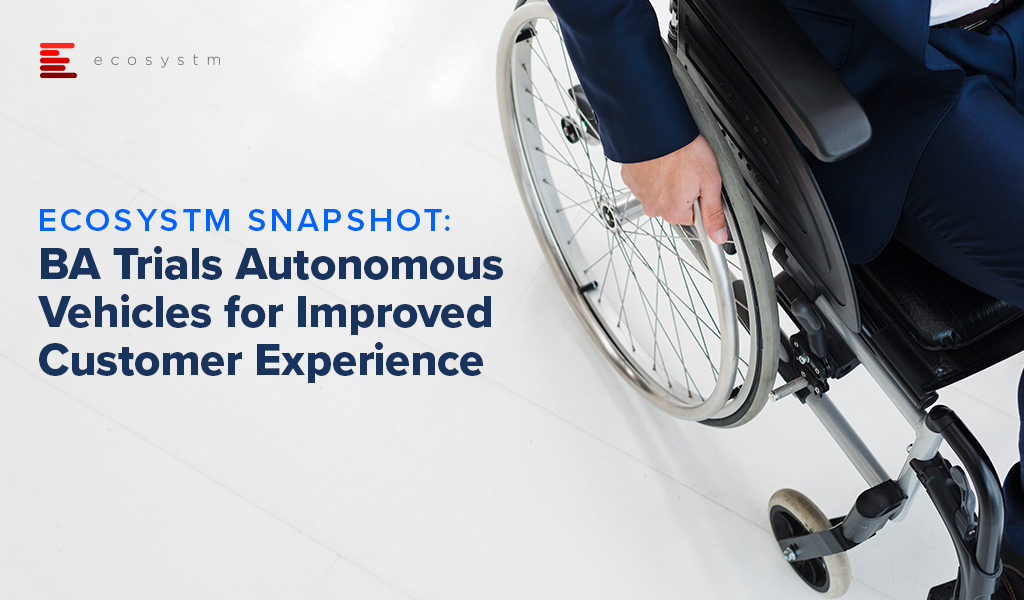There have been several pilots and implementations of autonomous vehicles, mostly with the focus on asset management and supply chain efficiency. However, the recent trial by British Airways (BA) at the JFK airport is a good example of autonomous vehicles being used to improve customer experience. The trial involved using fully autonomous, electric mobility devices to assist their passengers with mobility challenges. These vehicles are equipped with anti-collision measures as well as map functions to take the passengers to their preferred destinations.
Businesses across all industries and sectors are looking to improve their customer experience. These initiatives are primarily meant to drive return business – but when done well, they can also drive down costs and drive up brand perception. This initiative from BA is a great example of a company looking to put the customer at the centre of their business and solve customer pain points – particularly one as sensitive as providing equal access to services regardless of physical ability.
Serving customers with mobility challenges is a minefield for airlines – it is difficult to know exactly when people with mobility challenges will arrive at the airport and need to check in – and in a low margin business like the airlines industry, you cannot afford to have staff deployed just to assist passengers to the right gate or location. Even keep track of the location of the mobility assets – such as wheelchairs – at any given time can be challenging. Taking a staff member off check-ins or baggage handling to transport the customer with mobility challenges to their gate can impact the experience of other customers too. Often it can turn out to be lose-lose outcome, despite the best intentions.
And the BIG risk is when you get it wrong, there is a high likelihood that you will be crucified on social media – you can be certain of many retweets and angry emojis of inconvenienced passengers missing flights, left stranded at gates or stuck in security. So even if you tried to do a good job, it has the potential to backfire.
BA has thought out of the box here with this solution, starting with the challenge of getting people with mobility issues to their flights on time. But the added benefit they will likely see is the ability to do this quickly. These wheelchairs being autonomous and equipped with map functions should be easier to track and requisition just-in-time. This means customers will have to wait less for their wheelchairs and also be less concerned they might miss their flights – it may even mean that mobility challenges customers can even have the same airport experience as other customers – without the need to allow extra time to arrive at the gate. These vehicles free staff to serve all customers without having to divert attention to the one passenger whose needs are greater. This is also likely to get a lot of good PR and social media activity – helping the brand and showing their willingness to invest to ensure equal access to services regardless of ability. I know if I saw such a device in an airport I would ask the person in the chair if I could snap their picture to put it on social media – and credit BA for being an inclusive airline. While they cannot control bad social media coverage – BA has thought of a service than can help strengthen their brand. And again – at the centre of this is a happy customer.
By focusing on solving a real customer problem, BA should be able to win more business from those with mobility issues – a market which is growing rapidly – and also strengthen their position as an inclusive air travel provider.


